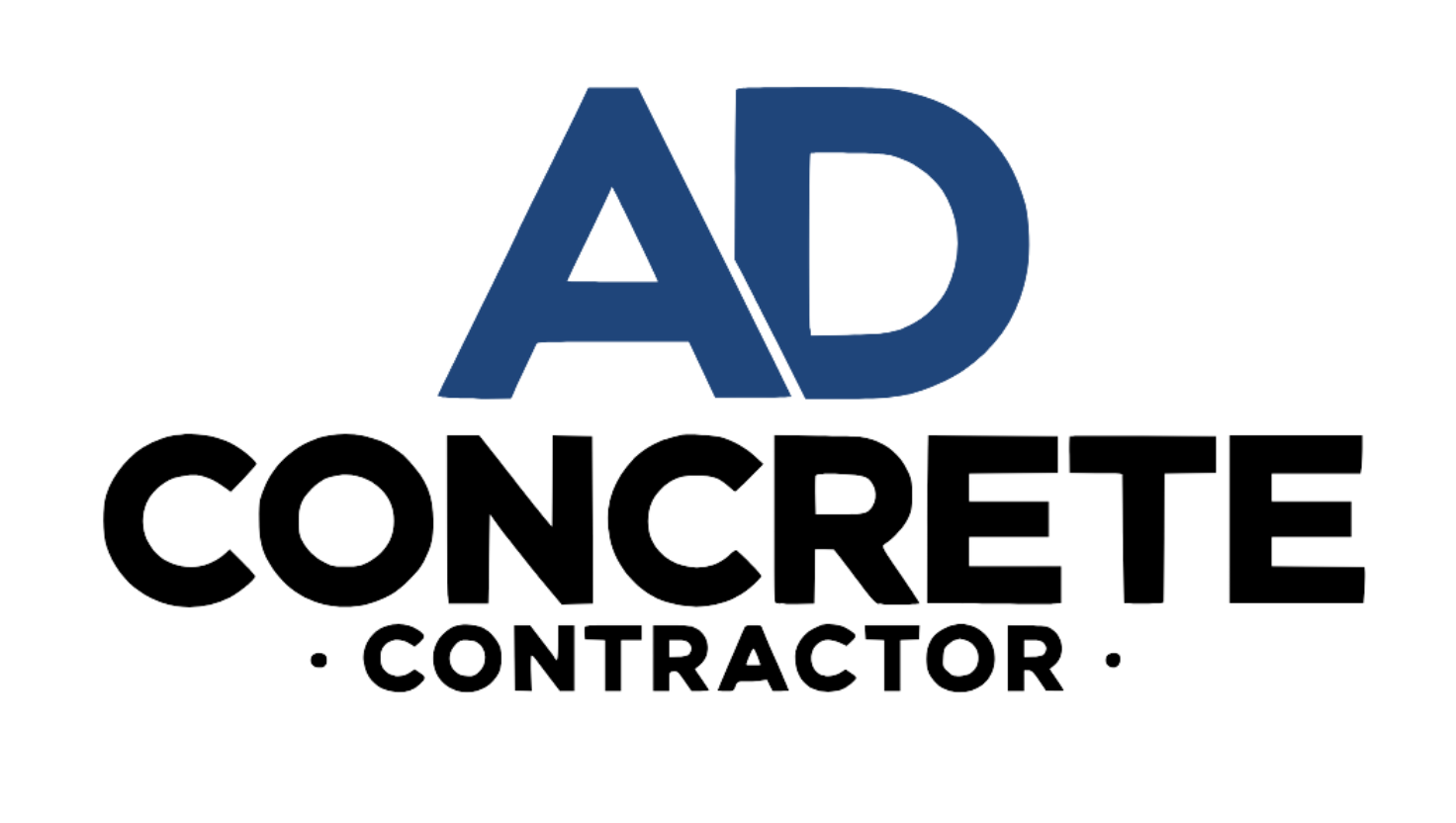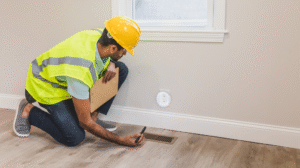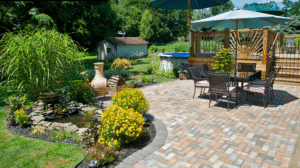Ever walked out to your car on a crisp Lubbock morning only to notice a fresh crack zigzagging across your driveway? You’re not alone.
I’ve seen countless homeowners drop thousands on premature driveway replacements that could have been avoided with some basic knowledge and maintenance. The truth? Lubbock’s climate is practically designed to destroy concrete if you don’t fight back.
But here’s the good news: with the right approach, your concrete driveway can withstand everything from our scorching summers to those surprise winter freezes.
Let’s dive into how you can protect your investment and avoid becoming another statistic in the “I should have maintained my driveway” club.
Why Lubbock’s Climate Is Your Driveway’s Worst Enemy
Lubbock throws a perfect storm of concrete-destroying conditions at your driveway:
- Temperature swings: We routinely see 30-40°F temperature changes in a single day
- Bone-dry summers: Leading to shrinkage cracks and surface deterioration
- Freeze-thaw cycles: Water expands by about 9% when frozen, creating internal pressure
- Clay-heavy soils: That expand when wet and contract when dry
According to a study from Texas Tech’s Civil Engineering Department, concrete driveways in Lubbock experience approximately 85-90 freeze-thaw cycles annually—nearly double the national average for similar climate zones.
The result? The average concrete driveway in Lubbock lasts just 15-20 years without proper maintenance, compared to 25-30 years in more forgiving climates.
Common Threats to Concrete Driveways in Lubbock
Temperature Fluctuations: The Silent Killer
You’ve felt those wild temperature swings—80°F during the day, 40°F at night. Your driveway feels them too.
Concrete expands in heat and contracts in cold. This constant movement creates microscopic cracks that grow larger over time. I’ve seen driveways with spider-web patterns across their entire surface, all from this expansion-contraction dance.
Soil Movement: The Foundation Betrayal
Lubbock’s notorious clay soils are among the most expansive in Texas. When it rains (rarely, but intensely), these soils swell dramatically. During our frequent droughts, they shrink back down.
This creates a literal roller coaster under your driveway. In my inspections across West Texas, I’ve measured soil movement of up to 2 inches vertically in a single season. No wonder concrete cracks!
Freeze-Thaw Damage: The Winter Wrecking Ball
Here’s what happens: Water seeps into tiny cracks in your concrete. When temperatures drop below freezing (which happens about 80 nights per year in Lubbock), that water expands and forces the crack wider.
Repeat this process dozens of times each winter, and small hairline cracks become structural problems. I’ve seen this transform a smooth driveway into a crumbling mess in just 2-3 winters.
Daily Wear and Tear: Death By A Thousand Cuts
Let’s not forget the obvious: your driveway supports thousands of pounds of vehicles daily. Add in oil drips, chemical spills, and relentless UV radiation (we get about 3,300 hours of sunshine annually), and you’ve got a recipe for deterioration.
Preventative Measures During Installation
If you’re installing a new driveway, you have a golden opportunity to get things right from the start.
Proper Site Preparation
Would you build a house on sand? Of course not. Yet I see contractors skimping on proper base preparation all the time.
For a driveway that lasts in Lubbock:
- Remove all topsoil and vegetation (minimum 8 inches)
- Add 4-6 inches of compacted base material (crushed limestone works well locally)
- Grade for a minimum 2% slope away from your home
- Consider installing a French drain system in areas with poor drainage
One client who followed these specs has a 22-year-old driveway that still looks nearly new, while his neighbor’s 7-year-old driveway (installed by a budget contractor) already needs replacement.
Use High-Quality Materials
Not all concrete is created equal. For Lubbock conditions, I recommend:
- Minimum 4,000 PSI concrete mix (standard is often just 3,000 PSI)
- Air-entrained concrete with 5-7% air content to resist freeze-thaw
- Fiber-reinforced mix for additional crack resistance
- Lower water-to-cement ratio (0.45 or less) for denser, stronger concrete
Yes, these upgrades might add 15-20% to your initial cost, but they’ll double your driveway’s lifespan. Do the math—it’s a no-brainer.
Control Joints and Reinforcement
Concrete will crack—period. The trick is making it crack where you want it to.
Strategic control joints (those lines you see cut into concrete) give concrete predetermined breaking points. They should be:
- Spaced at distances equal to 2-3 times the slab thickness in feet
- Cut to a depth of ¼ the slab thickness
- Installed within 24 hours of pouring
Additionally, proper reinforcement is crucial:
- #3 rebar in a 24-inch grid pattern, or
- 6×6 W1.4/W1.4 welded wire mesh placed in the upper third of the slab
I’ve seen identical driveways poured by the same contractor—one with proper joints and reinforcement, one without. Five years later, the difference was shocking.
Proper Curing Techniques
Lubbock’s low humidity is concrete’s enemy during curing. Concrete needs moisture to develop strength, and our dry air sucks it out too quickly.
For proper curing:
- Keep concrete moist for at least 7 days using curing compounds, wet burlap, or plastic sheeting
- Avoid pouring during extreme temperatures (below 40°F or above 90°F)
- Consider adding a curing compound specifically designed for arid climates
Data shows concrete cured properly can be up to 50% stronger than improperly cured concrete. That’s the difference between a driveway lasting 15 years versus 30.
Routine Maintenance Tips
Regular Cleaning
Think of cleaning your driveway like brushing your teeth—preventative maintenance that pays off.
At minimum:
- Sweep weekly to remove abrasive debris
- Clean oil and chemical spills immediately (they can penetrate and weaken concrete)
- Pressure wash twice yearly (spring and fall)
For stubborn stains, try TSP (trisodium phosphate) or a commercial concrete cleaner. Avoid using metal shovels or scrapers that can damage the surface.
Sealant Application
If there’s one thing you take from this article, let it be this: seal your concrete driveway.
In Lubbock’s harsh climate, you should apply a quality penetrating silane or siloxane sealer every 2-3 years. These sealers:
- Block water penetration while allowing vapor transmission
- Provide UV protection to prevent surface deterioration
- Create a barrier against oil and chemical stains
I tested this personally on my own driveway—sealing half and leaving half untreated. After five years, the difference was undeniable. The unsealed portion had visible surface erosion and multiple cracks, while the sealed section remained nearly pristine.
Local tip: Avoid acrylic sealers in Lubbock—they don’t hold up well to our UV exposure and tend to yellow and peel.
Manage Water Drainage
Water is concrete’s nemesis, especially when it pools or flows improperly.
Take these steps:
- Ensure downspouts direct water at least 5 feet away from your driveway
- Maintain a positive slope away from your home and garage
- Fill low spots where water collects
- Clean gutters regularly to prevent overflow onto your driveway
One client ignored a small area of pooling water for years. That spot eventually developed a network of cracks and had to be cut out and replaced—a $1,200 repair that could have been prevented.
Repair Cracks Promptly
Small cracks become big problems if ignored. Here’s my rule of thumb:
- Hairline cracks (under 1/8 inch): Use a quality concrete crack sealer
- Small cracks (1/8 to 1/4 inch): Use a latex or epoxy crack filler
- Medium cracks (1/4 to 1/2 inch): Use a concrete patching compound
- Large cracks (over 1/2 inch): Call a professional
Remember: repairs are about function first, aesthetics second. Don’t expect perfect color matching with DIY repairs.
Avoid Heavy Loads
Your residential driveway likely wasn’t designed for commercial vehicles in Lubbock. Avoid:
- Parking RVs, boats, or trailers long-term
- Allowing delivery trucks to drive on the edges of your driveway
- Placing dumpsters directly on concrete during renovations
Seasonal Care for Lubbock Driveways
Summer
- Apply UV-resistant sealer before peak heat (May-June)
- Water the soil around slab edges during extreme drought to prevent excessive shrinkage
- Clean oil spots promptly—heat accelerates their penetration
Winter
- Avoid using rock salt or calcium chloride ice melters (use sand or cat litter for traction instead)
- Remove snow promptly but use plastic shovels to prevent surface damage
- Fill any cracks before freezing temperatures arrive
Spring/Fall
- Conduct thorough inspections for winter/summer damage
- Clean and reseal if needed
- Check and repair drainage issues
When to Call a Professional
Some problems signal it’s time for expert help:
- Uneven sinking or heaving (often indicates soil or drainage issues)
- Cracks wider than 1/2 inch or that run through the entire slab
- Spalling (surface flaking) over large areas
- Multiple cracks forming patterns (often indicates structural issues)
Local tip: For reliable concrete contractors in Lubbock, check the West Texas Chapter of the American Concrete Institute for member listings. Always get at least three quotes and check references.
The Bottom Line: Protect Your Investment
A quality concrete driveway in Lubbock represents a $5,000-$10,000 investment. Spending a few hundred dollars annually on maintenance can double or triple its lifespan.
The math is simple: proactive maintenance costs pennies compared to premature replacement.
Take action this weekend—inspect your driveway, clean it thoroughly, and if you haven’t sealed it in the last three years, get that done before our next weather extreme hits.
Your future self (and wallet) will thank you.
Need help inspecting your driveway? Contact a Lubbock concrete expert today!



